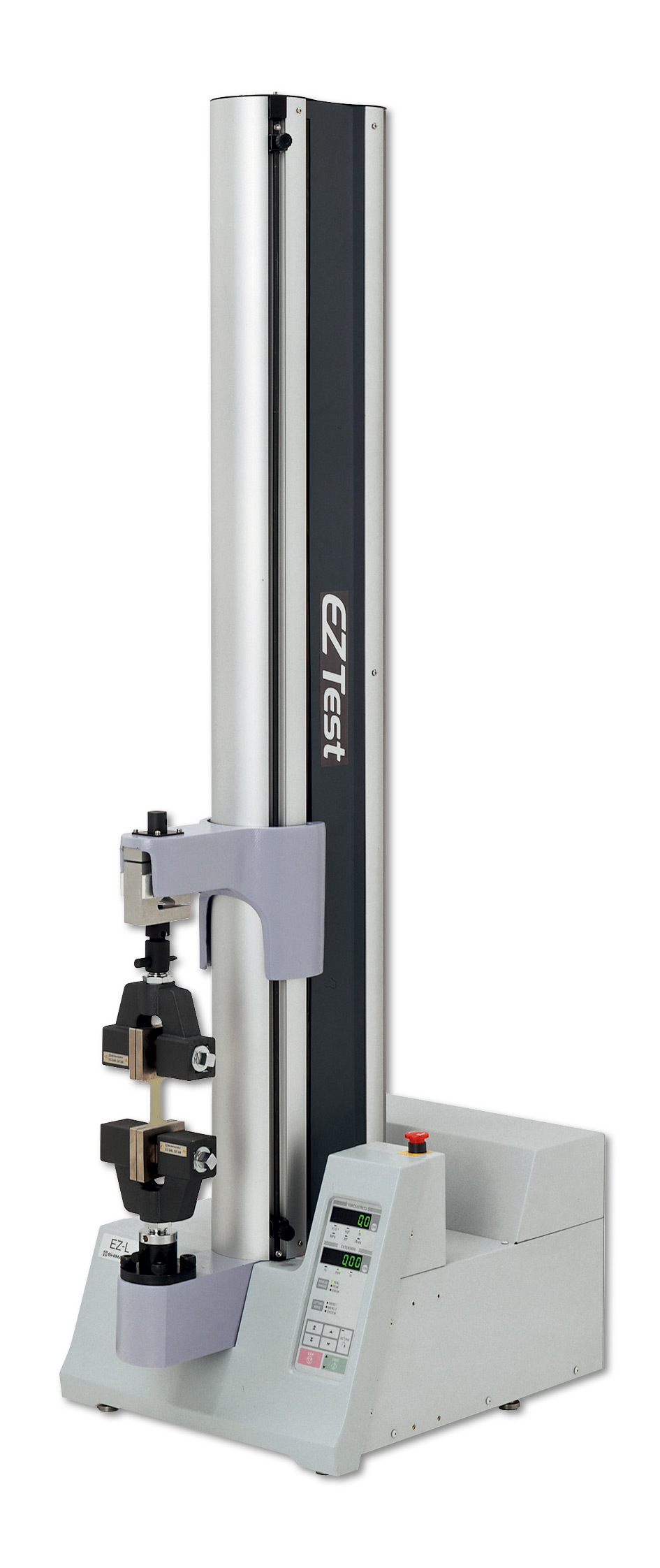Rapunzel, let your hair down
Tensile tests on human hair
Biologically speaking, human hair regulates body temperature, protects from rain and is a protective barrier against UV radiation. Today, these biological functions are of less importance as the social meaning of hair is becoming more and more significant. Hair is at the same time an eye-catcher and an embellishment, and is often an expression of personality. What has remained throughout history, however, is the fact that strong hair is a symbol for a person’s health, as symptoms of deficiency can have a direct influence on the quality of hair.
But how strong is human hair? Is it really possible that a prince was able to climb up the tower using Rapunzel’s hair? Could the Baron von Münchhausen really pull himself out of a swamp by his own hair?
Stress test for hair
 Figure 1: Single-column universal testing machine, series EZ-Test-L
Figure 1: Single-column universal testing machine, series EZ-Test-L
Modern technology offers the means to obtain objective results, for instance using universal testing machines. For this application, a hair is placed in a suitable clamping device – or glued to a vertically folded window cut from a piece of paper that is subsequently secured in a parallel clamping device. In the subsequent test, the hair is stretched at constant tensile speed until it breaks. The stress-strain diagram is a graphical representation of the curve from which the maximum force and the elastic modulus can be determined. As can be seen from the diagram, the maximum tensile load is approximately 1.16 N.
Humans have on average 100,000 hairs, so a maximum load of up to 116 kN (11.6 tons) is conceivable. Strong enough, therefore, to let a whole crowd of princes climb up Rapunzel’s hair. In this case, it is rather the force needed to pull a hair from its roots that is relevant.
Women or men – who has the toughest hair?
What is the influence of hair color on tensile strength? According to myth, dark hair is deemed to be thicker and, therefore, tougher compared to other hair colors. And what about differences between men and women? The table 1 provides a non-representative example on the relevance between hair color, hair thickness and gender.
Since hair thickness also depends strongly on water retention and humidity and therefore influences the above parameters, the samples were measured after a standard drying time at constant humidity.
 Table 1: Tensile strength data for different hair colors in men and women (*Good manners prevent asking)
Table 1: Tensile strength data for different hair colors in men and women (*Good manners prevent asking)
The results show that the tensile strength of male hair is considerably less than that of female hair. Stretching until breakage resulted in noticeably higher recorded values for female hair. A possible influence of hair care products could not be determined retroactively.
This, however, should not have any effect on the elasticity, which should be virtually the same for both men and women. Again, it can be determined that less-pigmented hair exhibits a higher elastic modulus than pigmented hair.